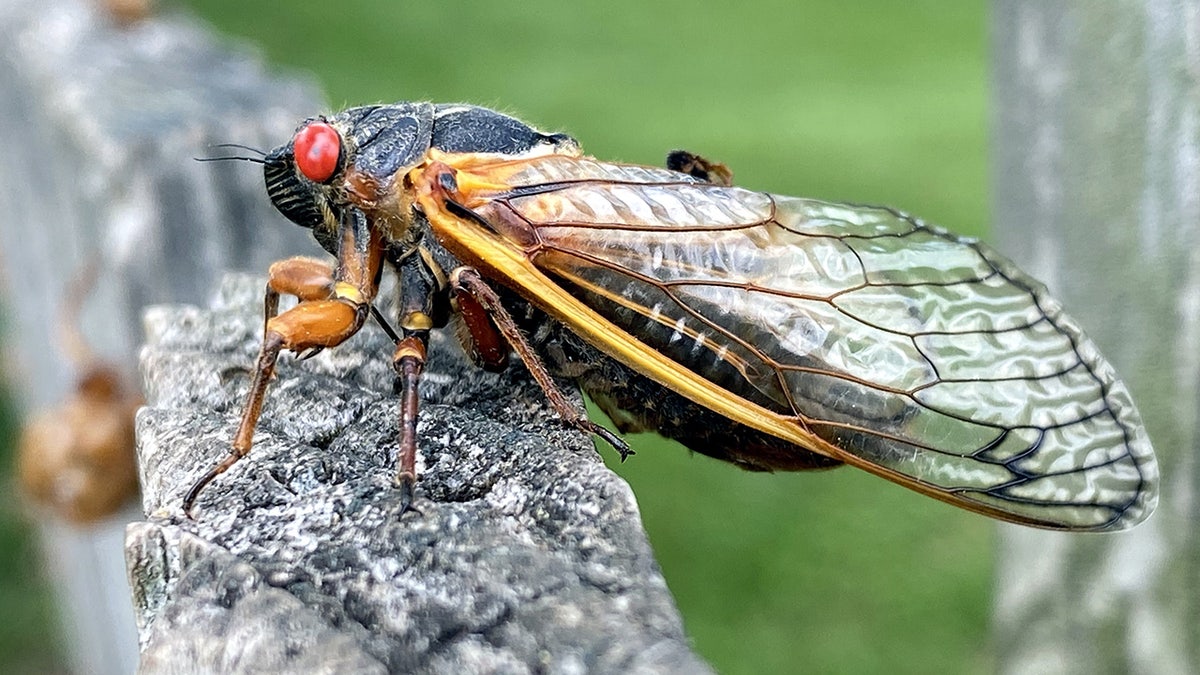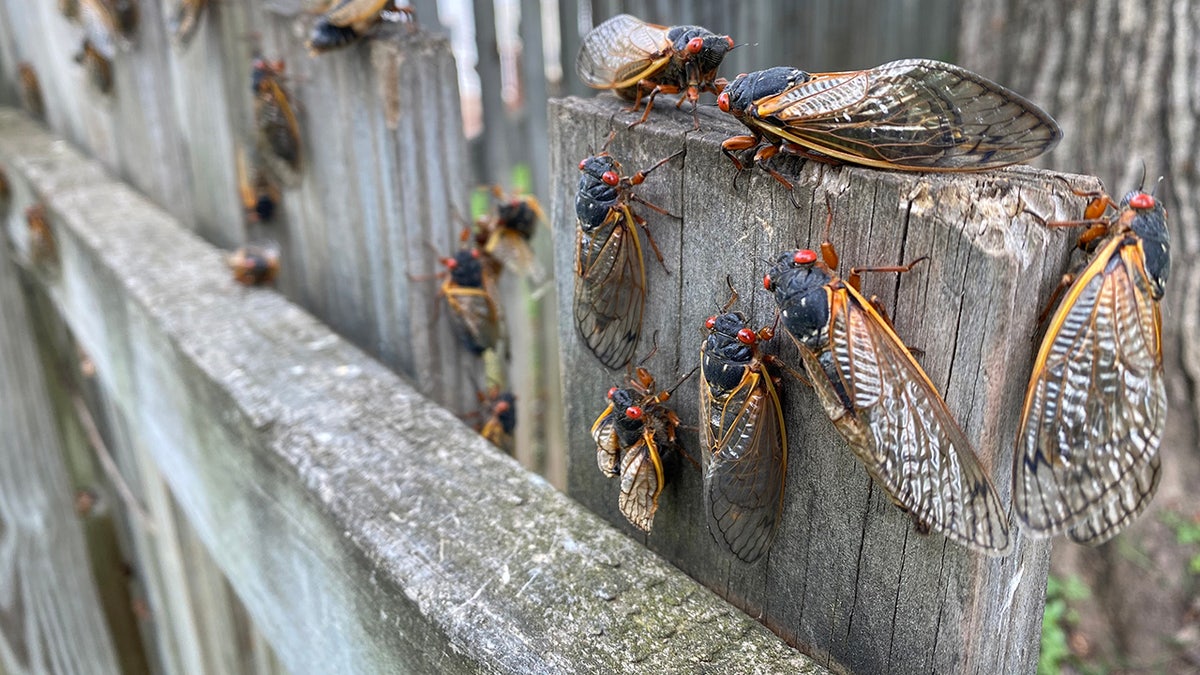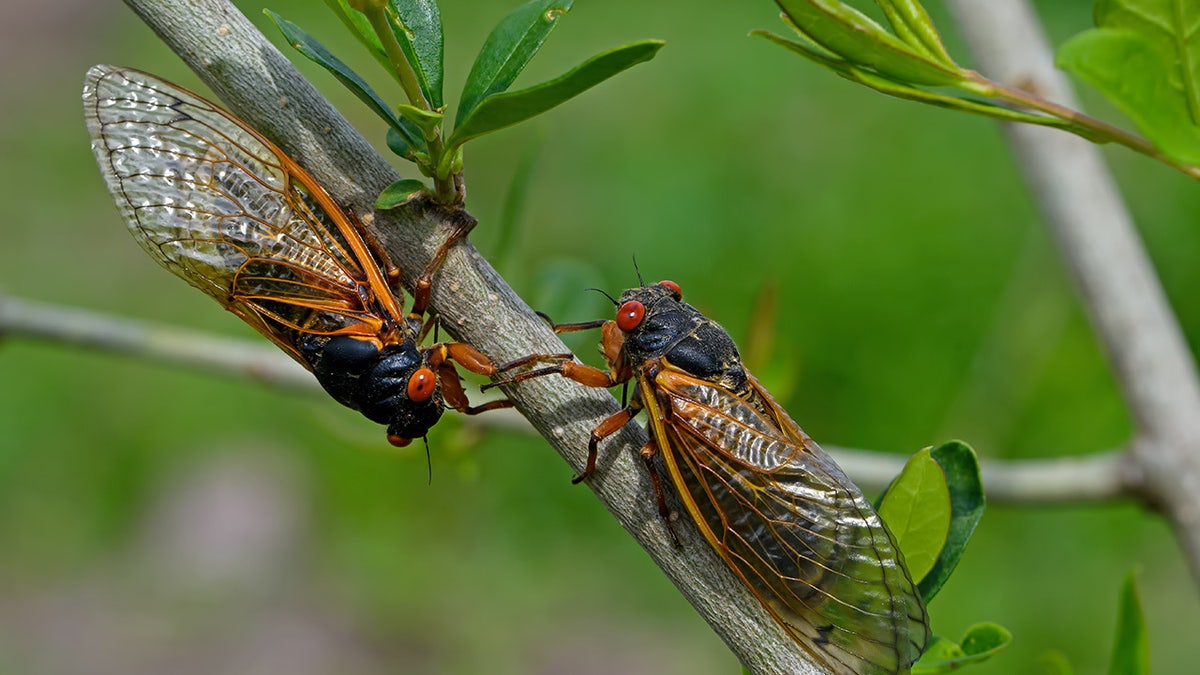Zoo animals chow down on rare cicadas
Animals at the Brookfield Zoo in Chicago, Illinois, were spotted eating cicadas. The periodical cicadas have emerged for the first time in 17 years and are part of two broods. The last time this happened was in 1803.
The low hum of summer typically includes lawnmowers and sizzling burgers — and this year, it may be the sound of cicadas.
This year’s brood of insects may be the second-biggest ever.
Two types of cicadas commonly exist in the Eastern United States: annual cicadas, which emerge every year, and periodical cicadas, which emerge every 13 or 17 years, according to the Environmental Protection Agency (EPA). The insects reside primarily in trees and shrubs.
INVASIVE INSECT POSES HEALTH THREAT IN 19 STATES, EXPERT WARNS
Broods are a way of categorizing cicadas based on this pattern, and less of a biological trait.
Because broods emerge in different areas, places that had cicadas last year may not have them this year, according to Dr. John R. Cooley, associate professor-in-residence of ecology and evolutionary biology at the University of Connecticut.

Two types of cicadas commonly exist in the Eastern United States: annual cicadas and periodical cicadas. (iStock)
Brood XIV is referred to as a “keystone” brood, Cooley told Fox News Digital.
It is the second-largest behind Brood XIX, the “Great Southern Brood,” which last emerged in 2024 in 15 states from Oklahoma to Maryland.
FLESH-EATING NEW WORLD SCREWWORM COULD POSE HEALTH RISKS TO CATTLE, HUMANS
While there is another “Great Eastern Brood” – Brood X, which emerged in 2021 – Brood XIV is larger, and could thus be considered the “Great(er) Eastern Brood.”
Brood XIV will emerge in states ranging from Georgia all the way up to New York, according to the University of Connecticut.

Because of the way broods emerge in different areas, places that had cicadas last year may not have them this year. (iStock)
What to expect during an emergence
“Once an emergence gets going, it lasts about a month, depending on the weather,” Cooley said.
“It seems like the weather this year has been quite strange — the emergence is well underway in North Carolina, but further north, because of the cold weather, it hasn’t even really started yet in Pennsylvania,” he added.
CLICK HERE TO SIGN UP FOR OUR LIFESTYLE NEWSLETTER
Adult cicadas climb into trees and shrubs to mate, and then females deposit their eggs onto small twigs.
The babies, called nymphs, hatch from these eggs after six weeks and fall to the ground. They then burrow into the soil and begin feeding on the roots of trees and shrubs to restart the cicada lifecycle, according to the EPA.

Cicada emergences typically last about a month, according to an expert. (iStock)
Cicadas will not eat leaves, flowers, fruits or garden produce, so it is not necessary to take special precautions to cover or apply additional insecticides in your garden, the above source stated.
For more Lifestyle articles, visit foxnews.com/lifestyle.
“People should keep in mind that what they are seeing is unique — there is no other place in the world where such a thing happens, and they are found only in the U.S.,” Cooley pointed out.
CLICK HERE TO GET THE FOX NEWS APP
The EPA also notes that cicadas don’t bite or sting, and they are not harmful to humans, pets, household gardens or crops.





